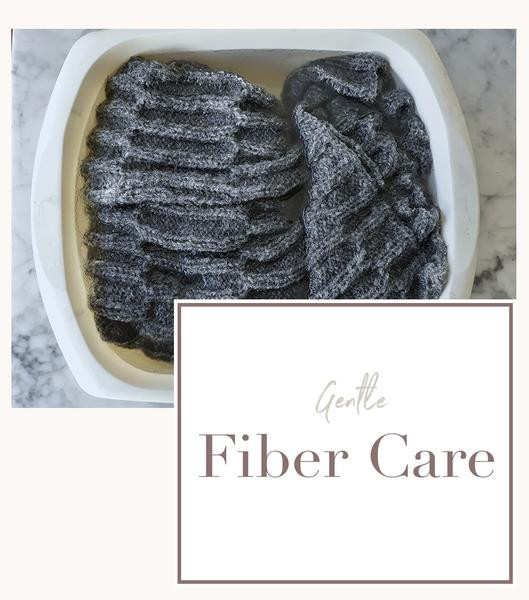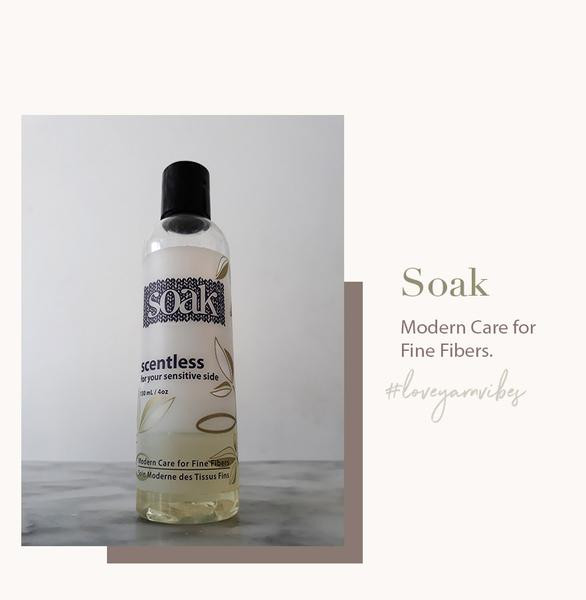9th Oct 2019
How to Wash and Look After Your Knits
By Máirín Ní Dhonncha
@aranaccessories
By Máirín Ní Dhonncha @aranaccessories I’m sure we all have either heard of or experienced ourselves, what can go wrong when bad washing happens to good handknits. I myself had a jumper I had knit for one child shrink so much (when washed at the recommended temperature!) that it became the jumper for the sibling who was three years younger! Accidental shrinking and/or felting are some of the main hazards in washing your knits, and can be enough to turn many people off handknit items for that very reason. It is, however, relatively easy to avoid, with a little care and knowledge.
If your handknit is to be gifted to someone else, and you are not sure how much time they will have to look after the knit, it is best to be careful in the yarn you choose. Baby items, in particular, will probably receive more washing than any other knits, and many baby yarn brands take this into account with the yarns they offer. Acrylic is certainly popular, as it is hardwearing and so easy to care for, but there is no need to avoid natural fibers for baby gifts, as there are many yarn blends of natural fibers which are machine-washable. Natural fibers such as the Yarn Vibes collection can last many years if cared for properly so make sure that the recipient will take a little time in caring for their gift ( don't be afraid to send them this guide!)

When washing woolen items, I think the first thing to check is – does this item NEED washing? It might sound silly, but a lot of us nowadays have gotten into the habit of chucking things in the wash after very little wear, which contributes to clothes wearing out faster, and to microfibres being released unnecessarily. Wool, by its nature, has a halo (the fluff surrounding it!), unless it has been superwash-treated. This halo is a natural repellent of many things which would be absorbed as a stain by material like cotton. Woolen knits were hugely practical in ‘the olden days’ when people might have only one change of clothing for Sunday best, as they did not require frequent washing.
Let’s take it that your knit (whether woolen or not) does require washing; the next big question is – machine or hand wash? This really depends on many things. A fine shawl is best washed by hand, but more robust knits, like hats and socks, can usually be handled just fine by the washing machine. Be sure to use the wool wash, and be careful about the temperature you choose – I always err on the side of caution by going no higher than 30 degrees Celcius ( 86 Farenheit ). A mesh laundry bag will also help keep your knit from potentially being snagged inside the machine drum. Please remember that many fibers react differently to water and agitation. Linen can be weakened by too much exposure to water, and silk can have its lifespan shortened by soaking for anything over 30 minutes.
Handwashing
If you are handwashing your knit, it is best to let it soak first with some gentle detergent, in warm, but not hot, water. There are some specialist detergents for wools and delicates, and I think they are usually worth the small extra expense. Soak and Eucalan are particularly suitable, and very little of either is needed for a handwash. Shampoo can also be surprisingly effective, particularly baby shampoo – wool is sheep hair after all!
After soaking for a short while (10 or 20 minutes), it’s time to get your hands in there, and gently squeeze the water through the knit. Remember to be gentle, you are not kneading dough! When the garment is thoroughly washed, it is either time to rinse or finish (if you used a no-rinse detergent). When draining the wash water, be careful to support the knit, so that it is not stretched by the weight of the water. Rinse as you would wash, by gently agitating the water through the knit by hand. Some people swear by a little white vinegar in the rinse, or indeed hair conditioner, or fabric softener – I would love to hear what you think in the comments!

Roll up the washed knit in a towel, and gently squeeze out as much water as you can. You might find you need two towels for this; just remember that your knit will dry faster if most of the water is removed at this stage. Now lay your knit FLAT to dry, on a towel, or heated airer (unless it is a small item, like hats, gloves or socks – these can be line dried without any problem). Hanging up a large item will result in its stretching, and possibly doing so unevenly, where you might end up with very long arms on a sweater! Delicate items will need to be pulled into shape again as if you were blocking it once more.
Looking after knits carefully will really prolong their lifespan. It’s a small price to pay to ensure years of enjoying a well-loved and unique, crafted item.
